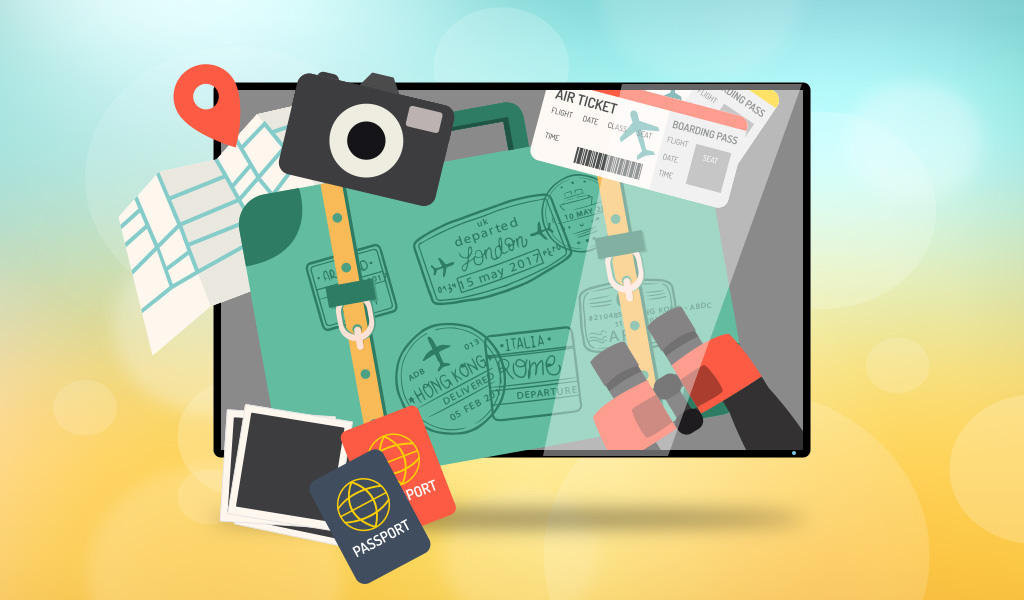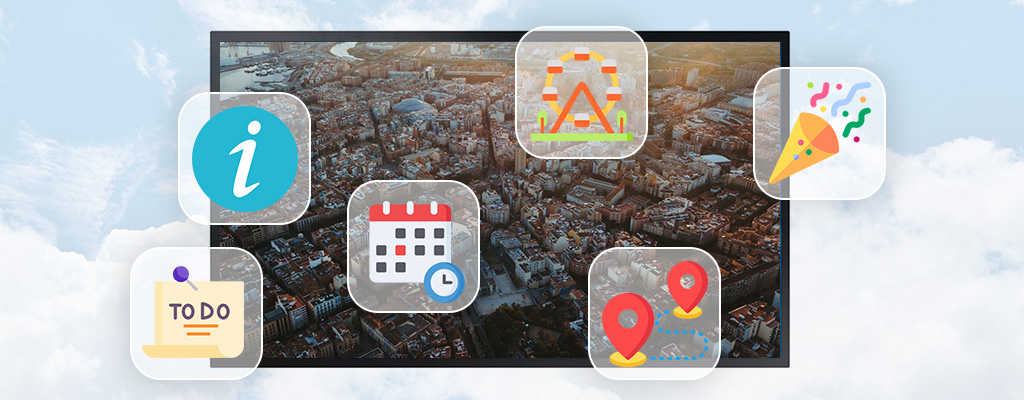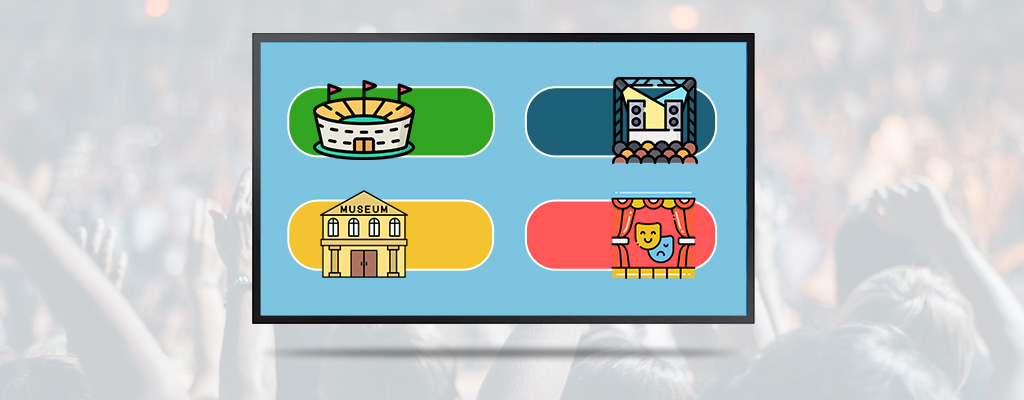
Digital Signage and tourism: how to create a tourist-friendly city
Multimedia monitors and totems installed in museums, public transportation, campsites, and hotels aren’t just about giving the impression of being “up-to-date.” These hardware systems, when paired with effective Digital Signage software, can simplify the experience for both tourists and businesses. Keep reading to find out how.
In the tourism sector, Digital Signage has revolutionized communication with visitors thanks to its ability to deliver dynamic and interactive content. Positioned in strategic locations within airports, train stations, hotels, tourist information centres, and points of interest, totems and monitors serve a dual purpose: providing essential service information while simultaneously offering ideas and inspiration for visitors to explore the city.
But why choose Digital Signage software over traditional printed communication? The key advantage is the ability to provide real-time, up-to-date information to tourists. For example, digital displays can show flight schedules, arrival and departure information, traffic conditions, and weather forecasts, allowing tourists to plan their movements more efficiently and avoid any mishaps, leaving them with a positive impression of the city.

Schedules, events, and information: everything Digital Signage can offer
But what do businesses gain by installing Digital Signage systems? Digital Signage helps staff manage customer inquiries more efficiently. Frequently asked questions and basic information (such as schedules) can be displayed on screens, allowing staff to focus on addressing the specific needs of guests, visitors, and travelers.
Here are the key reasons to switch to Digital Signage if you run a hospitality business, museum, or transportation company:
- Provide Directions
- Promote Local Attractions
- Offer Schedule Overviews using Digital Timetables
- Provide Real-Time Information
- Personalize and Digitize the Tourist Experience
- Highlight City Events for Tourists
Let’s have a closer look at each of these applications.
Provide directions
When tourists arrive in a new city, finding their way to major attractions and figuring out how to get there can be challenging and frustrating.
A totem with an interactive map that provides an overview of the entire city (including attractions, restaurants, and points of interest) along with directions will instantly make the visitor feel welcomed and heard. This thoughtful gesture will create a lasting positive impression, encouraging word-of-mouth recommendations that can attract new tourists. Naturally, the user experience (UX) should be simple and intuitive, even for those who aren’t tech-savvy.
An advanced solution could be integrating Google Maps Live View into multimedia totems or monitors. With this application, users can get directions by simply scanning their surroundings with their smartphones.
Promote local attractions
Especially in large cities, Digital Signage helps highlight all the opportunities and attractions a location has to offer. This makes it easier for tourists to discover must-see spots. The screen or totem should be installed in prominent, easily visible locations (even from a distance) for maximum visibility. Strategic spots could include outside hotel entrances, busy public squares, or near points of interest. Once a tourist finishes one visit, they can immediately decide where to go next.
To encourage visitors to explore the area’s beauty, monuments, vistas, and attractions should be presented with high-quality images and videos designed to impress. Avoid low-resolution or amateur photos.
Provide real-time information
Digital screens have become an essential communication tool, primarily because they allow for real-time updates. This capability is invaluable across many sectors, including tourism. If your business involves public transportation, for example, you can use Digital Signage to communicate changes in schedules, routes, or ticketing options. If you run a museum, Digital Signage is ideal for promoting special offers, tickets, and passes available across the city’s or region’s museum network. This allows for more efficient territorial promotion, reducing the burden on staff.
In hotels, Digital Signage can display information like restaurant partnerships, discounts for museum entry, promotions, and other useful details, freeing up the concierge and staff to focus on more pressing guest needs.
Personalize and digitize the tourist experience
Beyond promoting the area, Digital Signage in tourism allows you to personalize the tourist experience. By leveraging technologies like facial recognition and geolocation, if a tourist approaches a totem, the system can recognize them and provide personalized recommendations based on their interests and preferences. For example, it might suggest nearby restaurants, shops, or activities.
Another advantage of Digital Signage is its interactivity. Touchscreen displays enable tourists to create personalized tours directly from the totem or monitor. Visitors can get detailed information about an attraction, plan their activities, or book services right from the screen. The result? A higher level of engagement, and more positive experiences and memories associated with the city. Additionally, it reduces crowds at information desks and minimizes wait times, ultimately improving service quality.

Provide an overview of city events for tourists
Missing out on local festivals, cultural events, or concerts can be a real shame. The problem is that many visitors to a new city don’t know where to find this information. Multimedia totems and monitors offer an excellent solution. By displaying a weekly calendar of events happening in the city, tourists can stay informed and ensure they don’t miss anything. If the Digital Signage software includes scheduling functionality, event calendars can be published in advance, and any last-minute changes can be updated in real time.
In this context, Digital Signage is a powerful communication tool. Offering real-time information, directions, promoting local attractions, personalizing tourist experiences, and highlighting events are just a few of its many applications. Its ability to engage visitors and enhance their travel experience makes it a key element in the digital transformation of the tourism sector.
